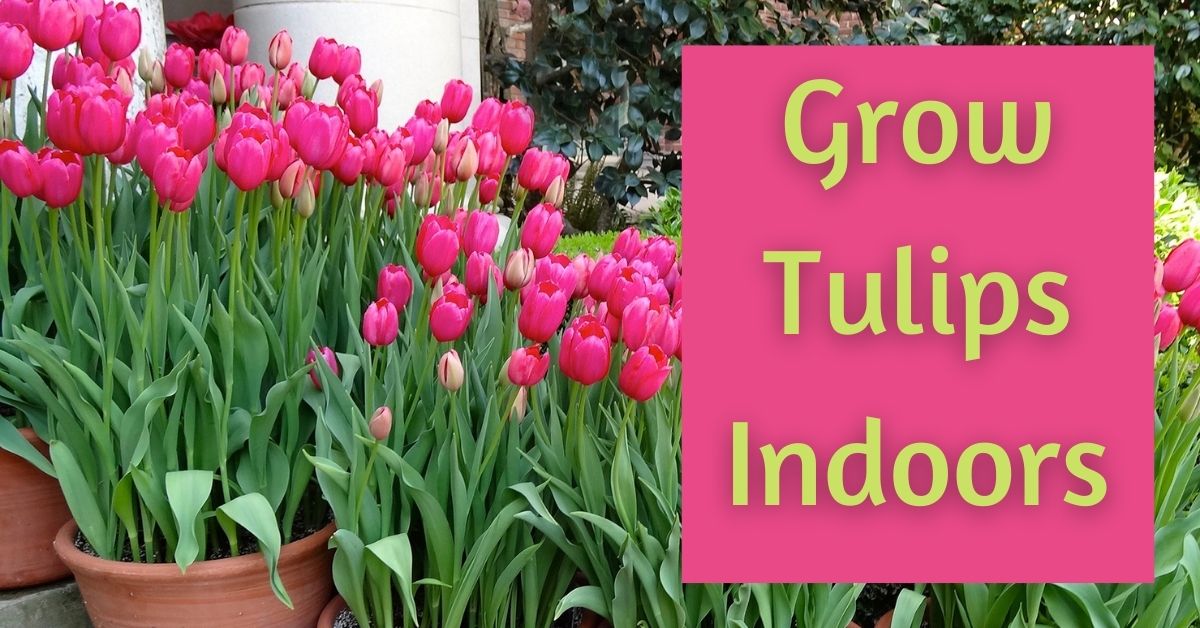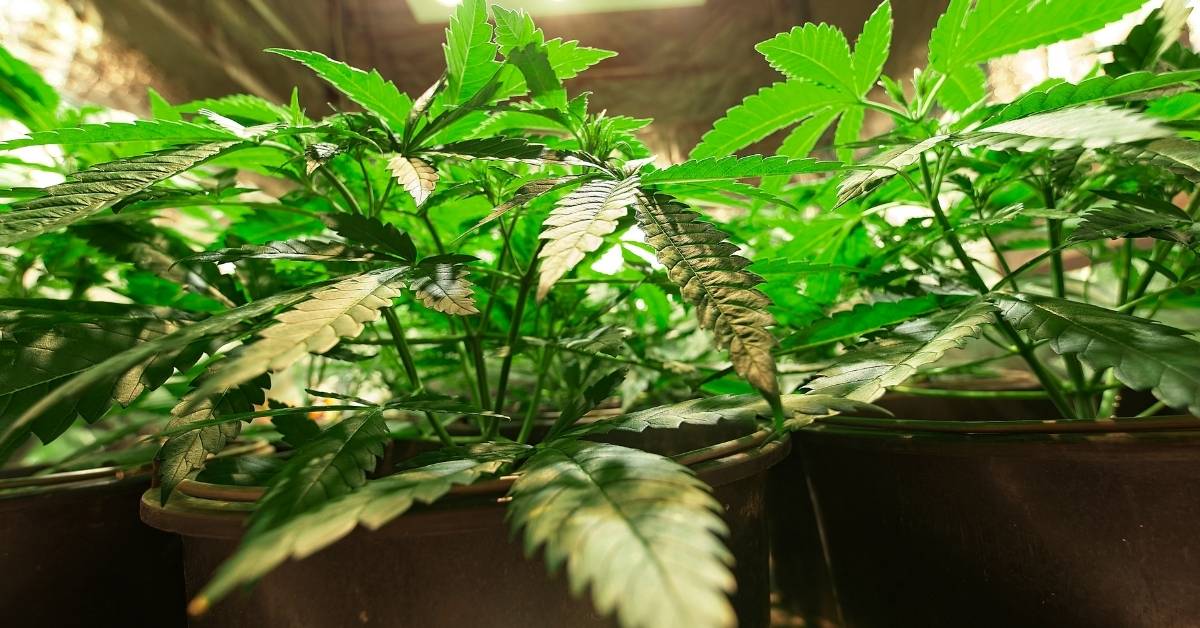Tulips are heralds of spring. They don’t have to be. Tulips growers know that tulips bloom based on the particular time of the year they were planted.
Many tulip lovers don’t want to wait for the traditional tulips from an outdoor garden. They grow them indoors and have their favorite flower for cuttings to fill all of the vases in their homes and business offices.
There are a few basic steps to learning how to grow tulips indoors. Take the time to study tulips and their expected growth patterns for the best results. Also don’t miss reading the extensive FAQ section belove the page.
When To Plant Tulip Bulbs Indoors
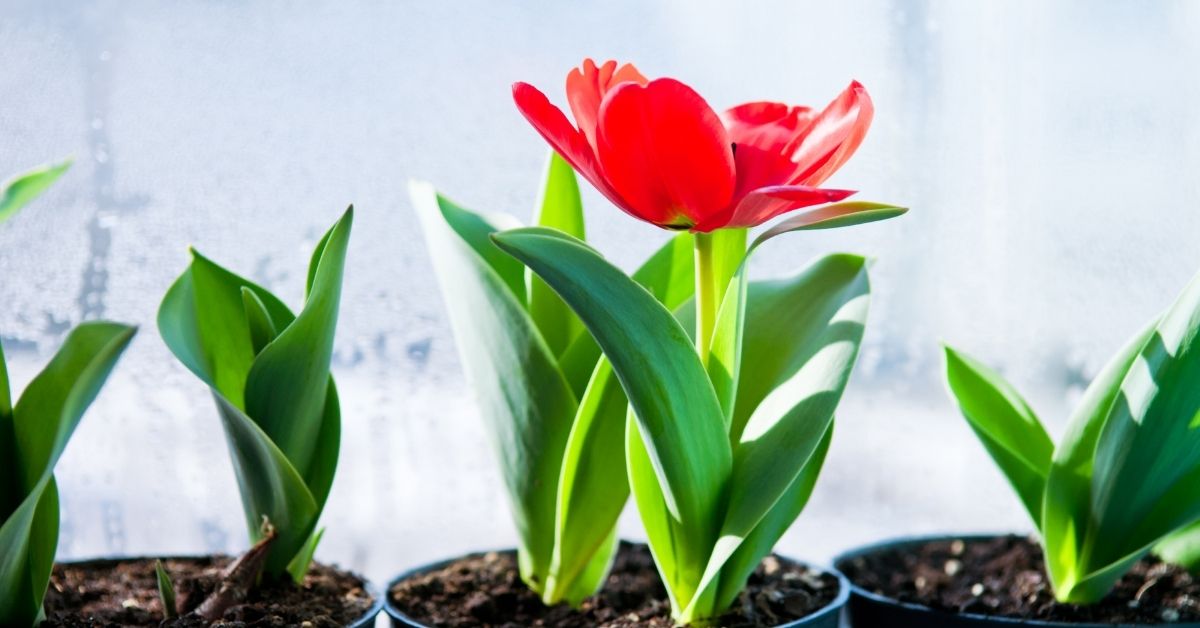
Planting Times for Tulips
Traditionally, tulips are planted outdoors in late fall or early spring to produce blooms. When grown in late fall, tulip bulbs are hardy enough to withstand cold winter climates.
However, for extreme cold, it may be best to plant tulip bulbs in early spring as soon as the soil is workable. Bulbs need to be planted four to six inches deep in rich loam soil to create healthy roots and deep colors of blooms.

Generally, tulips are in bloom in Zones 1 and 2 from the last week of March through the end of April. In the other four zones, tulips bloom faster due to warmer temperatures. Also, be aware that zone maps vary. Some maps feature only six zones.
Others include eight. This is a reflection of the extremes in climate and temperature ranges. In most cases, the packaging and label will provide the most accurate information on your particular zone. These are important to determine how hardy tulips will be under varying zone temperatures.
When Do You Plant Tulips Indoors
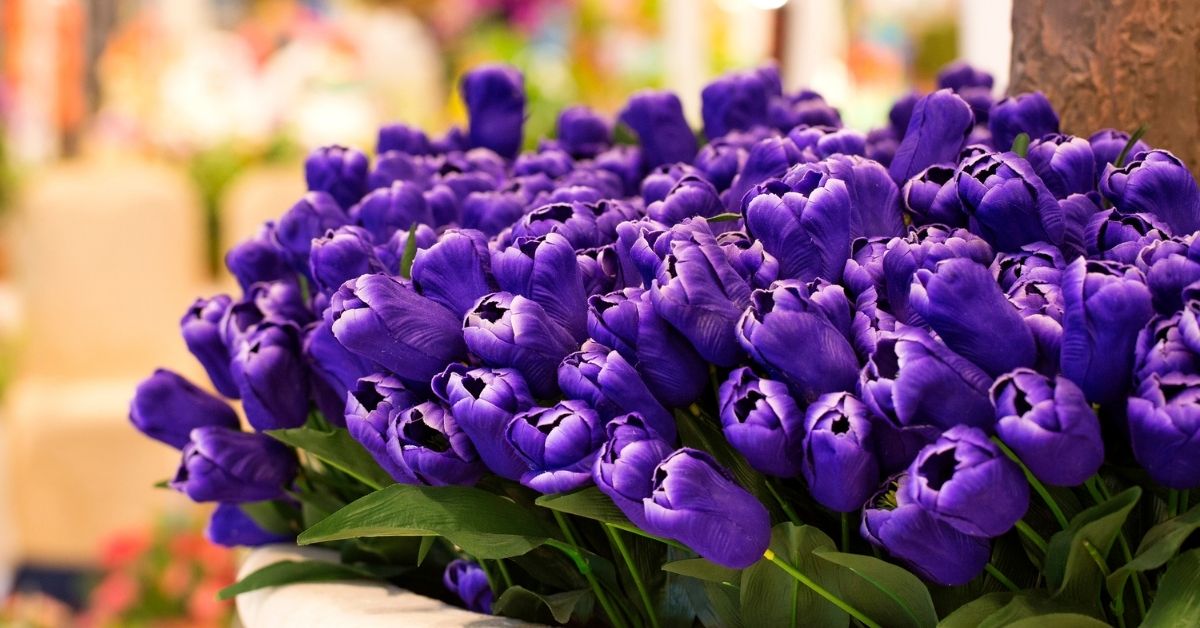
Any time of the year is appropriate for planting tulips in containers that are kept inside. Before planting bulbs indoors in containers, it is essential to check the condition of the bulbs. Larger bulbs don’t require as much time to grow before they begin to bloom as tiny bulbs do, so use them for indoor plantings.
You don’t need bottomless pots for tulips. In fact, broad clay dishes are excellent for them. Any area in the home would look beautiful with them as decorations.
By artistically positioning pots and grouping them in accordance with different tulip hues, it is possible to create an interior tulip garden. Most tulips like rich soil. Select a suitable medium, such as sphagnum moss, for the pot’s base for growing tulips inside.
Then, up to approximately half an inch below the top of the pot, fill it with rich, dark potting soil. Tulip bulbs should be placed in potting soil, then covered with more dirt so that just the tops of the bulbs are visible.
Tulips Need a Little Cold to Sprout Roots
After planting tulip bulbs, store them in a cool place where the temperature is less than 65 degrees, preferably about 60 degrees. Once roots have sprouted, tulips can be moved to a warmer, sunny room. Make sure the soil doesn’t dry out.
Once tulips have been moved to a sunny spot, water more frequently or as needed. Planting tulips indoors is a beautiful way to teach children how to grow flowers. It’s also a great way to learn about the different types of tulips that do well indoors.
Forcing tulips indoors
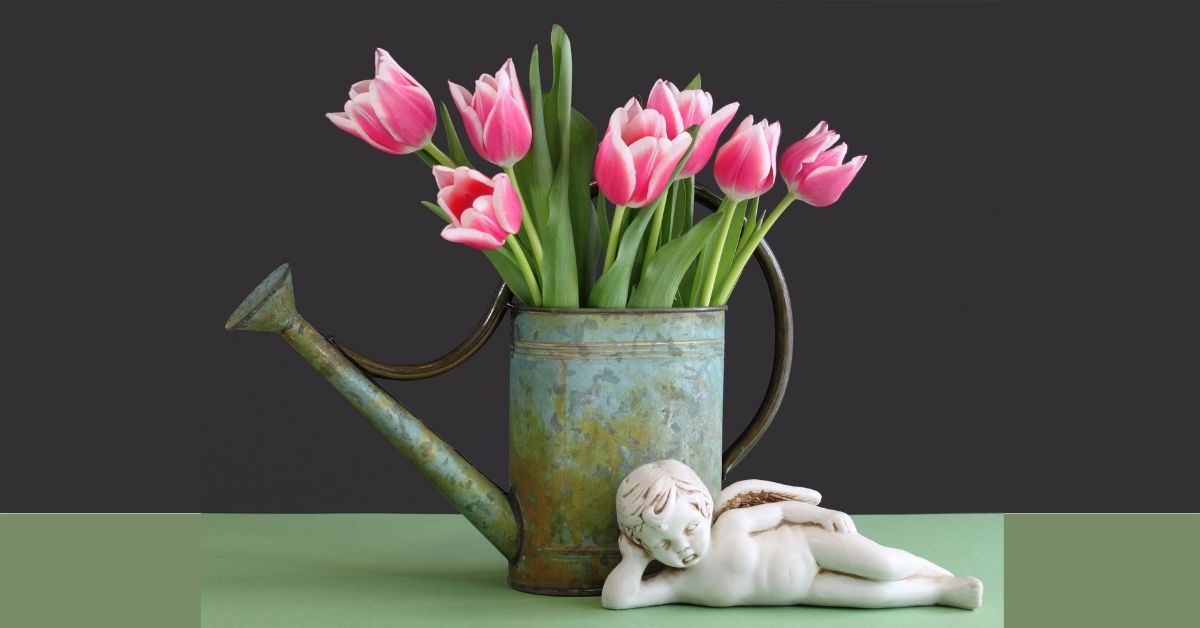
To force a tulip is to place it in a container, simulate winter weather, and get it to blossom sooner than it would in the spring. A tulip may be forced to bloom sooner, but it cannot be made to blossom later. The first thing to think about is choosing Tulip varieties that can be forced.
Many tulip lovers prefer forcing tulips to grow rather than plant outdoors or through the usual indoor planting process. However, the most common tulip varieties are the easiest to force. If they are planted in the fall, they will most surely bloom by mid-December. There are several things you’ll need to do this:
- Tulip bulbs of a common variety
- Potting soil
- Plastic or clay pots (preferably clay which naturally promotes growth)
- A watering can
How long does it take to force tulips indoors?
Be sure to give the plants plenty of water. Regularly turning the pots will encourage growth that is vertical and straight. After the bulbs have been removed from their cold storage location, the blooming process should begin around three to four weeks later on average. Take containers out of cold storage once every two weeks to ensure a steady flow of blooms on indoor plants.
Tulip Varieties and Colors
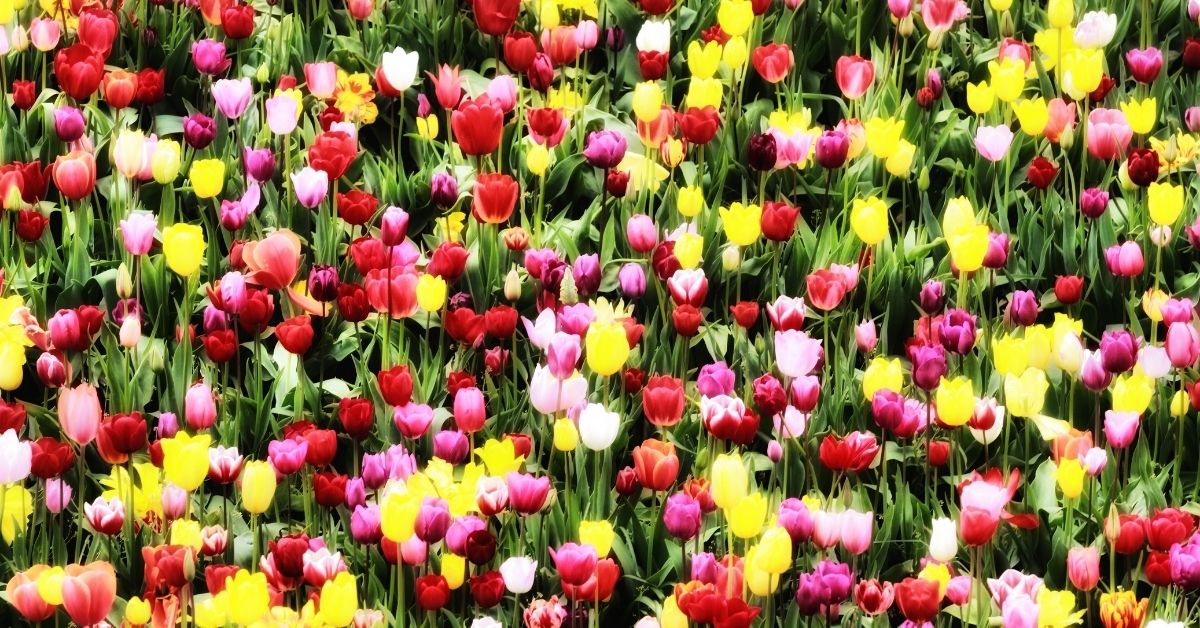
Common varieties of tulip bulbs are the hardiest. Variegated species of tulips are not as hardy and prefer more natural growing environments. This is the reason for choosing common varieties for indoor growing. Don’t forget to coordinate the colors of the tulip bulbs you select for indoors.
It can make all the difference to the color scheme of a room. For example, lighter tulips do well with darker-colored rooms. Add darker-colored tulips where more drama is needed. Tulips are available in a wide range of colors.
Red, white, yellow, deep purple, coral, apricot, fuchsia, green, pale to deep pink, orange, and variegated colors that mix yellows with reds and oranges and are often striated with tinges of green. There is also a difference in tulip sizes.
Tulips grow from about six inches in height to more than twelve inches, depending on the species. With the cross-pollination processes used today, tulip sizes and colors can vary.
For indoor growing, such variety is a great opportunity to create the most attractive indoor tulip garden that can surprise families and guests. Businesses also like to add tulip gardens to their offices. Tulips require minimal maintenance compared to other indoor plants. The profusion of colors makes any dull office brighter.
Hardy Tulips Indoors and Out
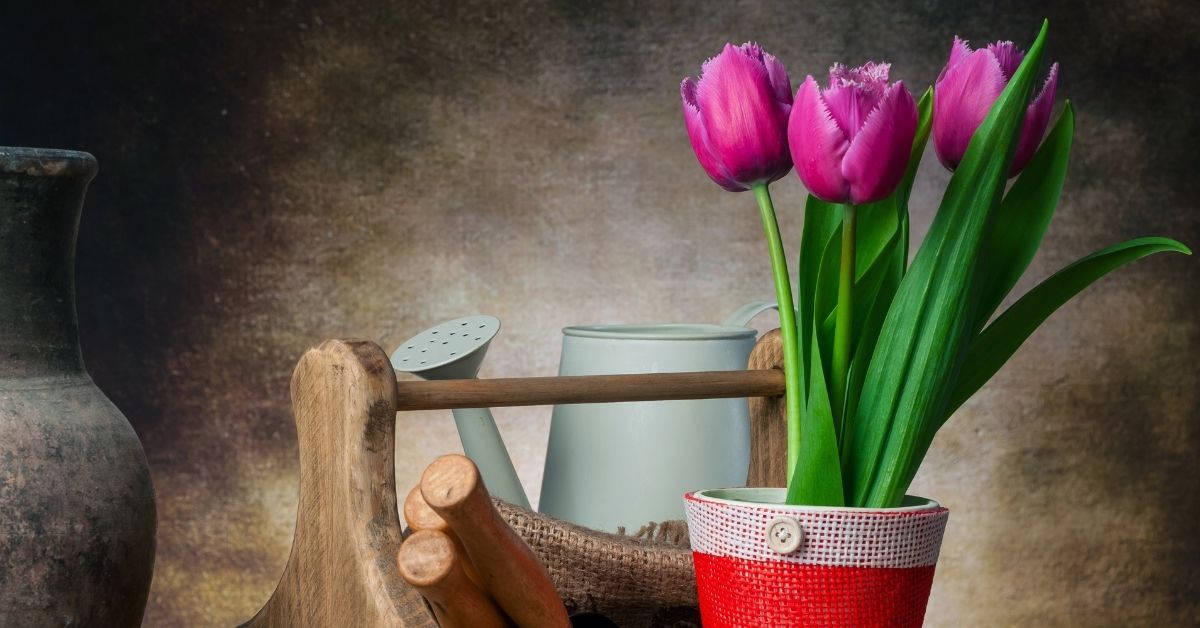
Tulips are popular among gardeners for a variety of reasons, one of which is that they can withstand damage even after a late-spring snowstorm. These floral plants are used to cold temperatures well. Rarely do tulip blooms endure more than two weeks, either indoors or outside.
This is one reason why indoor gardeners want to think about altering their planting schedules so they may take advantage of the blossoms all year long. Tulip bulbs should be planted indoors in different pots approximately two months apart.
When tulips are not overcrowded in pots, they thrive. To determine how many bulbs to put in a container, measure the diameter all around. In a container with a diameter of six inches, for instance, six tulip bulbs may blossom and develop without difficulty.
Tulip Creativity
To create more interest in indoor tulip gardens, choose pots of varying sizes. Then, plant red tulip bulbs in two or three pots and white tulip bulbs in one or two pots. When they bloom, the red and white colors will catch attention quickest.
Another color scheme is more subdued. Plant pink tulip bulbs in two pots and surround these with a profusion of dark red tulips in four pots. Indoor potted tulip plants are like having a florist shop right in your own home or office with you as the designing florist.
How Much Light Do Tulips Need?
It may be surprising that darker-colored tulip bulbs need less sunlight to maintain those deep, rich colors. Lighter-colored tulips need slightly more sunlight. The local garden center or online site can advise on how much light the particular tulip species needs. If you grow tulips indoors, you might want to check out LED grow lights. For example:
- Full sun
- Partial sun
- Full shade
- Partial shade
Protecting Tulips from Damage
Growing tulips indoors requires less protection than those grown outdoors. Indoors, ordinary dust affects the moisture retention of tulip bulbs. Keep bulbs in a relatively dust-free area. Before planting tulip bulbs, check for signs of black rot. Discard any bulbs that appear to have this type of damage.
Tulips with Flair
Growing tulips indoors has allowed gardeners a much wider selection of the texture of tulips. The most common tulips are glossy and have sturdy stems. The petals tend to be well-shaped. Other species of tulips have fringed edges to give them added appeal. Still, other tulips have longer petals that separate into lily-like shapes.
Don’t forget tulips can also be paired with grape hyacinth, bells of the snow, aromatic hyacinth, daffodil, and jonquils in indoor gardens. These flowering bulbs, unlike perennial indoor tulips, have short-lived blooms and will only produce once annually. They add a refreshing change to an indoor tulip garden.
Propagating Tulips

The method for propagating tulips is relatively simple. Tulip roots tend to create offshoots. When tulip bulbs are dug up after the first blooms die off, the tulip gardener will discover smaller bulbs clinging to the roots.
These can be removed and replanted to create more tulip plants. Also, certain tulip species cross-pollinate when they are growing very close in proximity to each other. This cross-pollination often creates a different color or species of the original tulip plants. Indoor tulip gardeners can encourage propagation by planting bulbs closer to pots.
Be Proud of Your Indoor Tulip Garden
All the joy of an indoor tulip garden is seeing all of the work and effort produce glorious colored plants. Since these will be grown indoors year-round, consider entering your most prized tulips in the local state or municipal fair.
Where to Purchase the Best Tulip Bulbs

Finding the best quality tulip bulbs today is easy. A local garden center will have several top-quality varieties that are ideal for indoor planting. Shopping for tulip bulbs is fun. The garden center will also supply pots, potting soil, and watering cans for indoor gardeners.
When you purchase them online, your tulips will mostly be shipped at the appointed growing time according to the tulip suppliers’ schedule. However, if you desire to purchase tulip bulbs for indoor gardens, be sure to check the online site for the best choices of tulip varieties for this purpose.
FAQ
How late can tulip bulbs be planted?
You may start planting bulbs as long as the soil is ready to be worked. This implies that you may plant bulbs as late as January, provided that you dig a hole that is sufficiently deep to accommodate the bulbs.
You may plant daffodils and tulips all the way up to the month of January! They will continue to produce roots throughout the spring, and as a result, they will blossom later than they normally would.
What month is the best to plant tulip?
Planting tulip bulbs in the autumn is the best time to do it. Before planting, the soil should have had time to recover from the heat of the summer growing season.
This may mean waiting until September in climates with zone 3 to 5 temperatures, October in climates with zone 6 to 7 temperatures, and November or December in climates with zone 8 or higher temperatures (zones 8 to 9).
Should I soak tulip bulbs before planting?
No. It is not necessary to soak them in water before to planting them. The process of taking root may be sped up by soaking the cuttings in water for 12 to 24 hours if you are running behind schedule in having them planted.
Do tulips multiply year after year?
Yes. Tulips are one of the few plants that not only come back year after year, but also proliferate and create clumps that become larger with each passing season. This phenomenon is known as naturalizing.
This process takes place when the bulblets that are created by the mother bulb reach the appropriate size to break off and develop their own blooms.
Do you water tulip bulbs after planting?
Tulips require relatively little water. After planting, they need just a single, thorough watering, and then you can forget about them until the next spring. The one and only exception to this rule is when there is a prolonged drought, in which case you should water your plants once per week to maintain a wet soil.
Do you deadhead tulips?
Yes! The removal of dead tulip flowers, often known as “deadheading,” is a good idea in general since it encourages the growth of the plant and helps it reproduce more quickly. In addition, by removing spent flowers from plants at the appropriate time, you may encourage them to bloom again the following year with no more work on your part.
How long do indoor tulips last?
The tulip bloom may last anywhere from one to four weeks at a time. You will need to remove the spent flower heads from the tulip plant while it is still in the seeding stage after the blooms have finished blooming.
Can you grow tulips indoors year round?
Yes. A bulb garden consisting of cold-resistant spring bulbs such as tulips, hyacinth, crocus, daffodils, and others can be planted and grown in pots and brought inside to bloom in the latter part of winter.
A cold treatment followed by positioning the bulbs in a cool, sunny window in your home will entice the bulbs into bloom at an artificially accelerated rate. The bulbs you buy should be solid and free of any mold or mildew.
How do you trick tulips into blooming?
When the bulbs are put on top of the soil in the container, the tops of the bulbs should reach the lip of the container. The containers should be filled with exactly the right amount of soil. For more impressive blooming displays, firmly press the bulbs into the earth and position them so that their tops are virtually in contact with one another.
What is the best tulip species for indoor growing?
The National Gardening Association claims that smaller varieties, like humilis tulips (Tulipa humilis), are best for growing indoors because they require much less space to produce a striking flower display than larger varieties. However, practically any variety of tulip will thrive indoors if given the proper conditions and care.
